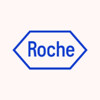
A Study to Assess the Efficacy of RO5459072 in Participants With Primary Sjogren's Syndrome
Sjogren's SyndromeThis is a randomized, double-blind, placebo-controlled, two-treatment arm, parallel-group study designed to evaluate the effects of RO5459072 treatment on disease activity and symptoms of Sjogren's syndrome in adult participants with moderate to severe primary Sjogren's syndrome. The total duration of the study for each participant will be approximately 18 weeks (including screening).

Pivotal Assessment of the Effects of Bioactive on Health and Wellbeing. From Human Genome to Food...
Metabolic SyndromeThis is a multi-centre, randomised, double-blind, placebo-controlled, parallel-arm dietary intervention study. In total, 800 men and women at risk for Metabolic Syndrome (MS) will be recruited. Subjects will be eligible to the study if they present with two to four of the MS diagnostic criteria, at least one of them being: fasting triglycerides ≥150 mg/dL but ≤400 mg/dL OR HDL-cholesterol ≤50 mg/mL in women, ≤ 40mg/mL in men (with fasting triglycerides ≥110 mg/dL). Each of the four recruiting centres will recruit 200 volunteers. Participants will be randomly assigned to one of four groups to receive either: Dairy BEF + egg placebo + bakery placebo Egg BEF + dairy placebo + bakery placebo Bakery BEF + dairy placebo + egg placebo Dairy, egg and bakery placebo Participants will be required to consume all three of the allocated products each day for 12 weeks. Eligible volunteers will be included and randomly allocated to one of the four groups. At baseline, 6 weeks and 12 weeks after inclusion, each participant will visit the recruiting centre for clinical and biochemical investigations. At 3 weeks and 9 weeks participants will complete questionnaires relating to their satisfaction with the food products, compliance to consumption of the study food products, and any gastrointestinal side effects or health-related adverse events that have occurred in the previous 3 weeks. At each recruiting centre 40 participants will be required to take part in additional activities, these are: stool sample collection, adipose tissue aspiration, body composition analysis by dual energy x-ray absorptiometry (DEXA) and assessment of physical activity.

Azithromycin in Post Diarrheal Haemolytic and Uremic Syndrome
Haemolytic and Uremic SyndromePost diarrheal hemolytic and uremic syndrome (D+HUS) is the first etiology of acute renal failure in children less than 5 years old in France. Previous works highlighted a mortality rate of 2 % and a prevalence of renal sequelae at one year after D+HUS onset in 25 % of patients D+HUS is a consequence of a gastrointestinal infection with shiga toxin (Stx) producing E.coli (STEC). The most frequent straight is E.coli O157H7. The sequence of STEC induced HUS is now well known. Typically, digestive symptoms appear five days following STEC ingestion. STEC colonize the intestinal mucosa, adhere to the enterocyte and cause a typical attaching/effacing lesion and inflammation. Then, diarrhea and vomiting occurred. D+HUS occurs in about 10% of patients and is a consequence of Stx systemic absorption. Indeed, Stx are released in the gastrointestinal tract, then after transferred to the systemic circulation. At the cellular level, Stx binds the globotriosylceramide (Gb3Cer) localized at the surface of the endothelial and epithelial cells of target organs. Following binding to Gb3Cer, the A subunits of Stx are internalized and trigger the activation of the apoptotic program leading to cell death. In addition, Stx are also able to enhance the production and the release of pro inflammatory factor (IL-1, TNFα, IL-6). Cytokines locally produced by Stx-stimulated cells can amplify the inflammatory processes and the prothrombotic state leading to the constitution of the microangiopathic lesions of HUS. To this day, management of D+HUS involves supportive care mainly based on fluid management, dialysis and red blood cells transfusions. Specific therapies used in D+HUS (plasma infusion, antithrombotic and anti inflammatory agents) failed to improve the course of D+HUS. The use of antibiotics remains not recommended while meta-analysis clearly showed that the use of bactericidal antibiotics could worse the course of D+HUS. In vitro experimentations highlighted that some classes of antibiotics like fluoroquinolones dramatically increase the production and the release of Stx before bacterial lysis and worsen the outcome of D+HUS in animal models. By contrast, azythromycin, a bacteriostatic antibiotic of the macrolides family blocking the protein synthesis in bacteria, has a strong inhibitory effect on Stx production and release by STEC as well as it inhibits the in vitro growth of STEC strains. In addition, azithromycin is able to inhibit the Stx-induced production of inflammatory cytokines which are considered to be essential for the development of D+HUS. Consistently the use of azithromycin in animal models of D+HUS dramatically improved the survival rate. Preliminary data on humans with D+HUS treated with azithromycin highlighted a lower prevalence of severe gastrointestinal involvement than in control patients. All these data supported the hypothesis that azithromycin should have a beneficial effect on D+HUS and should improve the short and long term outcome and deserves to be formally demonstrated in human with D+HUS.

Fecal Microbiota Transplantation for the Treatment of Diarrhea-Predominant Irritable Bowel Syndrome...
Irritable Bowel SyndromeThe objectives of this study are (1) to determine the efficacy of fecal microbiota transplantation (FMT), given as oral capsules, compared with placebo for the treatment of refractory diarrhea-predominant irritable bowel syndrome (IBS-D); (2) determine the impact of FMT on the intestinal microbiome of patients with IBS-D; and (3) assess the safety, feasibility, and tolerability of FMT for patients with IBS-D.

A Phase 2a, Randomized, Placebo Controlled, Study to Evaluate the Safety and Efficacy of AMG 557/MEDI5872...
Primary Sjögren's SyndromeA Phase 2a study to evaluate the efficacy and safety of AMG 557/MEDI5872 in Primary Sjögren's Syndrome

Effects of a Movement Training for Subacromial Pain Syndrome
Shoulder Impingement SyndromeObjectives: Evaluate the effects of a rehabilitation program based on movement training on symptoms, functional limitations and acromiohumeral distance (AHD) in individuals with SPS. Methods: Twenty-five participants with SPS participated in a 6-week program. Outcomes of both groups were evaluated at baseline and 6 weeks. Changes in symptoms and functional limitations were assessed. Changes in AHD for both groups were assessed using ultrasonographic measures.

A Pilot Study to Evaluate the Hypoglossal Nerve Stimulator in Adolescents With Down Syndrome and...
Sleep ApneaObstructive1 moreObstructive sleep apnea (OSA) affects up to 1% of the general pediatric population and is associated with adverse behavior and quality of life, as well as long term cardiopulmonary system complications. Trisomy 21 (Down Syndrome) is the most common chromosomal disorder, with a incidence of approximately 1 per 660-800 births. Patients with Down Syndrome have a higher incidence of OSA than the general pediatric population, with rates of 30-60%, resulting in increased morbidity and decreased quality of life for affected individuals. In children, adenotonsillectomy (T&A) is often a contributing factor to OSA, and adenotonsillectomy is a first line treatment. Children with Down Syndrome often undergo T&A for obstructive sleep apnea, however 30-50% will have persistent obstructive sleep patterns requiring continuous positive pressure airway support (CPAP) or tracheotomy. Persistent obstruction is attributed to anatomic and physiologic differences in this population, including reduced muscular tone, macroglossia, maxillary hypoplasia, and lingual tonsil hypertrophy. This pilot study is designed to determine if the Inspire® Upper Airway Simulation System, Model 3024 IPG, and any subsequent iteration thereof that are approved under P130008 for the treatment of obstructive sleep apnea, which has already been approved for use in adults with OSA, can be safely implanted and used in adolescents and young adults with Down Syndrome.

Effects and Plasma Concentration of Ticagrelor, After Crushed and Non-crushed Intake, After Acute...
Acute Coronary SyndromeThe first aim of the study is to prove that after starting the therapy with crushed tablets, the platelet inhibition will be as expected after starting therapy with intact tablets. Gurbel et al. showed that 100% of the patients on ticagrelor treatment have a decrease from baseline platelet aggregation of >10% 4 hours after last maintenance dose. So the investigators expect that after 3 days of treatment, all of our patients will have a closing time of more than 106seconds. The investigators will observe two different clinical conditions of Acute Coronary Syndrome. First after semi-urgent coronary artery bypass graft (CABG) surgery, secondly in patients after cardiac arrest. Both are clinical situations in which crushed tablets are needed to give. The second objective is to determine plasma concentrations of Ticagrelor and AR-C124910XX (active metabolite of ticagrelor) in these two patient populations after receiving 180mg or 90mg start-dose. Determination of plasma concentrations is done after protein precipitation, by using liquid chromatography with mass spectrometry detection. Measurements will be determined before intake (0h) and at 0,5; 1; 2; 4; 8; 24h and at day 4 +4h.7 The first 24h this will be a crushed tablet and 4 hours after the first intake at day 4 of therapy, this will be a non crushed tablet.

Hyaluronidase for Trigger Point Injection in Myofascial Pain Syndrome
Myofascial Pain SyndromeMyofascial pain syndrome (MPS) is the most common cause of persistent regional pain characterized by myofascial trigger points. Trigger point injection (TPI) using local anesthetics is one of the most effective methods for treatment of MPS, and steroids or botulinum toxin can be added to local injections . Recent study suggested that the hyaluronan (HA) could be the basis of myofascial pain. HA within the deep fascia facilitates the free sliding of two adjacent fibrous fascial layers. If the HA assumes a more packed conformation, or more generally, if the loose connective tissue inside the fascia alters its density, the behavior of the entire deep fascia and the underlying muscle would be compromised. The investigators anticipated that hyaluronidase could decrease the viscosity of HA near the muscle and fascia of trigger points. Meanwhile, hyaluronidase is thought to promote the spread of local anesthetic solution by hydrolyzing glycosidic bonds within HA. Hyaluronidase was shown to be effective in retro- and peribulbar block for ophthalmologic surgery or reducing tissue edema in dermatology, and adhesiolysis for some interventional pain managements. However, the effect of the addition of hyaluronidase to local anesthetics during TPI has not been studied. The investigators aimed to compare the efficacy of TPI with the addition of hyaluronidase compared to local anesthetic alone on pain and quality of life in MPS patients.

Impact of Obstructive Sleep Apnea Treatment in Patients With Metabolic Syndrome
Sleep ApneaMetabolic SyndromeObstructive Sleep Apnea (OSA) is a common condition that may induce hemodynamic and metabolic dysregulation. However, it is not clear if OSA is a mere epiphenomenon or contributes to increase the morbidity associated with metabolic syndrome. This study was designed to evaluate the impact of OSA treatment with CPAP in consecutive patients with metabolic syndrome.
